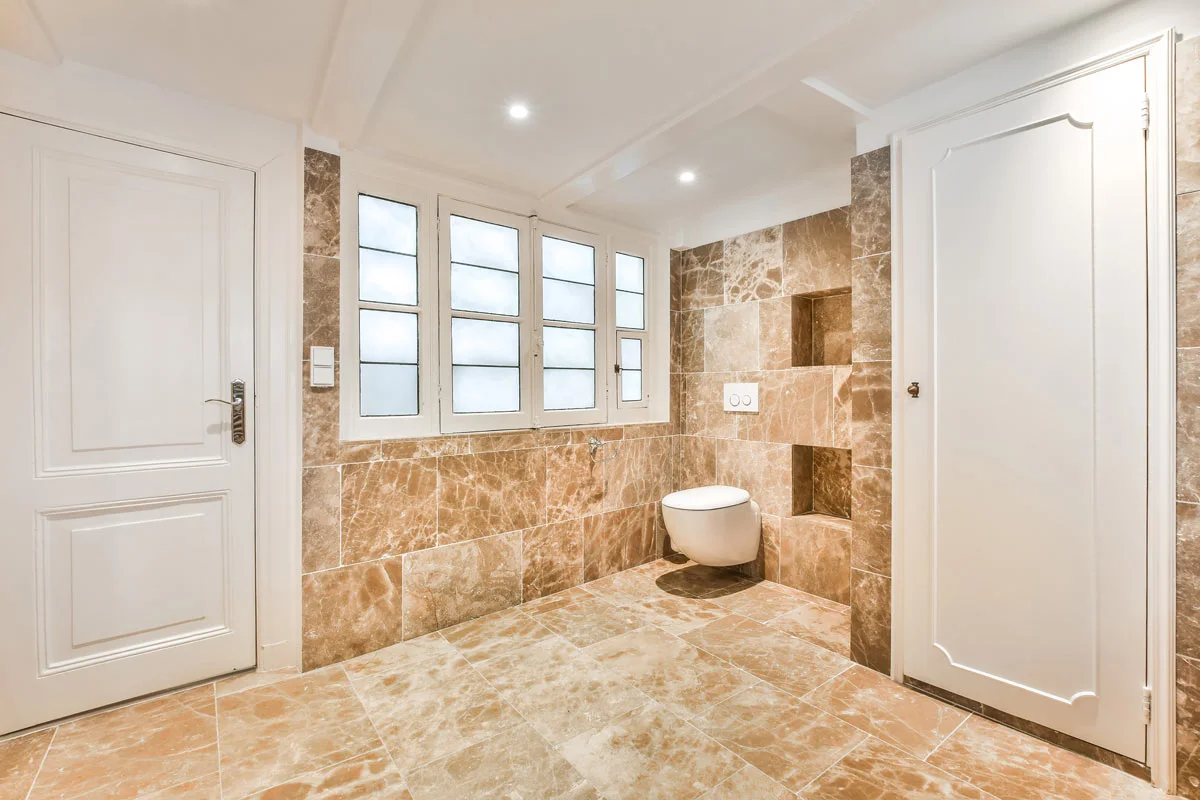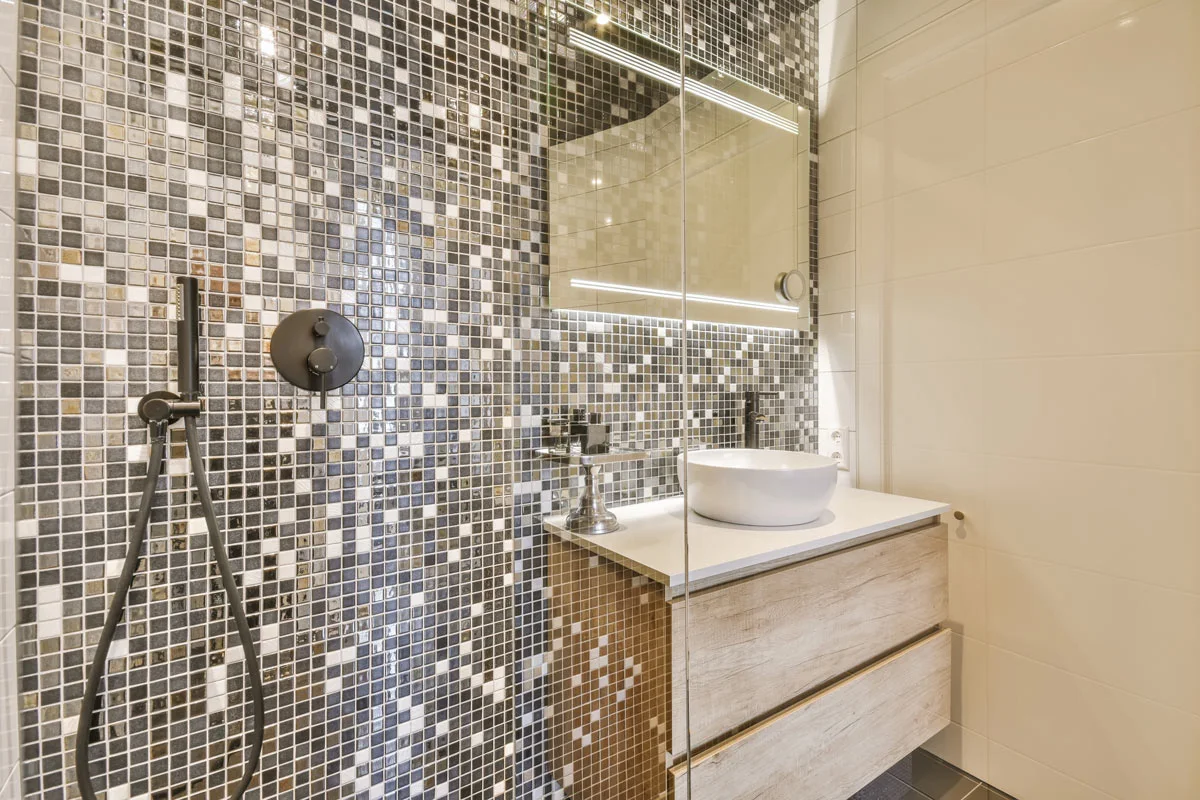When it comes to bathroom tiling choosing the right material is crucial for both aesthetics and functionality. Each type of tile has its own set of advantages and drawbacks. Let’s explore the pros and cons of popular bathroom tile materials to help you make an informed decision for your next renovation project.
Ceramic Tiles
Ceramic tiles are a classic choice for bathrooms, offering a balance of affordability and style.
Pros:
- Affordability: Ceramic tiles are generally less expensive than other options.
- Variety: They come in a wide range of colours, patterns, and sizes.
- Easy maintenance: Ceramic tiles are simple to clean and maintain.
Cons:
- Less durable: They’re not as hard-wearing as porcelain tiles.
- Water absorption: Ceramic tiles are more porous than porcelain, making them less water-resistant.
Porcelain Tiles
Porcelain tiles are a premium option, known for their durability and water resistance.
Pros:
- Durability: Porcelain tiles are extremely hard-wearing and resistant to scratches.
- Water resistance: With a water absorption rate of less than 0.5%, they’re ideal for wet areas.
- Versatility: Available in various designs, including stone and wood looks5.
Cons:
- Cost: Porcelain tiles are generally more expensive than ceramic.
- Installation: They can be more difficult to cut and install due to their hardness.
Natural Stone Tiles
Natural stone tiles, such as marble or slate, add a luxurious touch to bathrooms.
Pros:
- Unique appearance: Each stone tile is one-of-a-kind.
- Increased home value: Natural stone can boost your property’s value.
- Durability: When properly sealed, stone tiles can last for decades.
Cons:
Maintenance: Natural stone requires regular sealing and careful cleaning.
- Cost: They’re often more expensive than ceramic or porcelain options.
- Porosity: Some stones are more porous and prone to staining.
Luxury Vinyl Tiles (LVT)
LVT is gaining popularity in bathrooms due to its practicality and modern designs.
Pros:
- Water resistance: LVT is 100% waterproof, making it ideal for bathrooms.
- Easy installation: Many LVT products are designed for DIY installation.
- Comfort: LVT is softer underfoot compared to ceramic or porcelain tiles.
Cons:
- Durability concerns: While resistant to water, LVT can be prone to scratches and dents.
- Environmental impact: LVT is not as eco-friendly as natural materials.
Mosaic Tiles
Mosaic tiles offer endless design possibilities and can create stunning visual effects.
Pros:
- Design flexibility: Mosaic tiles allow for intricate patterns and designs.
- Slip resistance: The numerous grout lines provide better traction in wet areas.
- Customisation: You can mix and match colours and materials for a unique look.
Cons:
- Maintenance: More grout lines mean more cleaning and potential for mould growth.
- Installation complexity: Laying mosaic tiles can be time-consuming and requires skill.
Conclusion
Choosing the right tile material for your bathroom depends on various factors, including your budget, maintenance preferences, and desired aesthetic. Consider the pros and cons of each material carefully, and don’t hesitate to consult with a professional tiler or interior designer for expert advice.
Remember, the perfect tile choice will not only enhance the beauty of your bathroom but also ensure its longevity and functionality. Whether you opt for the classic appeal of ceramic, the durability of porcelain, the luxury of natural stone, the practicality of LVT, or the creativity of mosaics, your bathroom tiling project is sure to transform your space.
For more insights on bathroom tiling, check out our previous blog post on “How to Choose the Perfect Grout Colour for Your Bathroom Tiles “. And stay tuned for our upcoming article, “Small Bathroom? 7 Tiling Tricks to Make It Look Bigger” , where we’ll share expert tips on maximising the visual space in compact bathrooms.





